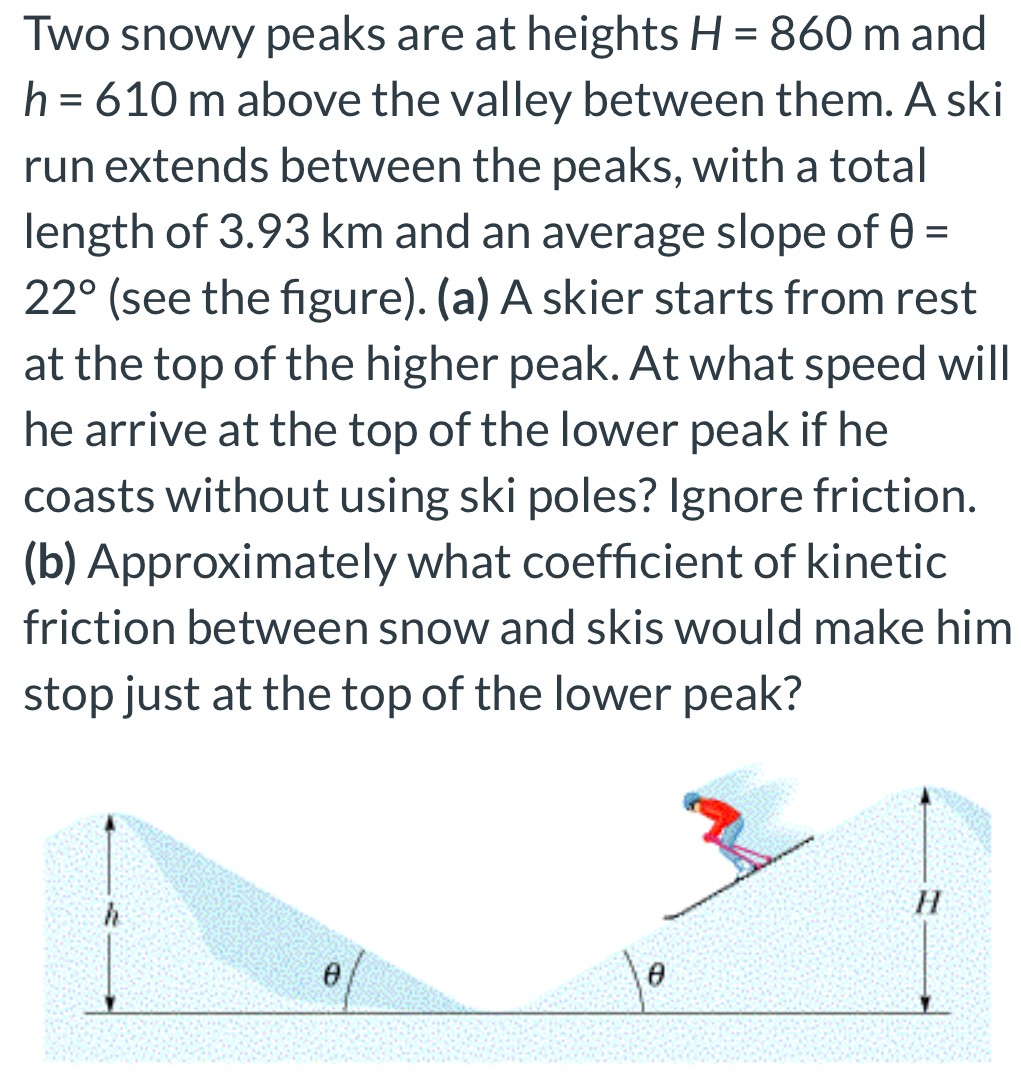Two snowy peaks are at heights H = 860 m and h = 610 m above the valley between them. A ski run extends between the peaks, with a total length of 3.93 km and an average slope of θ = 22∘ (see the figure). (a) A skier starts from rest at the top of the higher peak. At what speed will he arrive at the top of the lower peak if he coasts without using ski poles? Ignore friction. (b) Approximately what coefficient of kinetic friction between snow and skis would make him stop just at the top of the lower peak?
